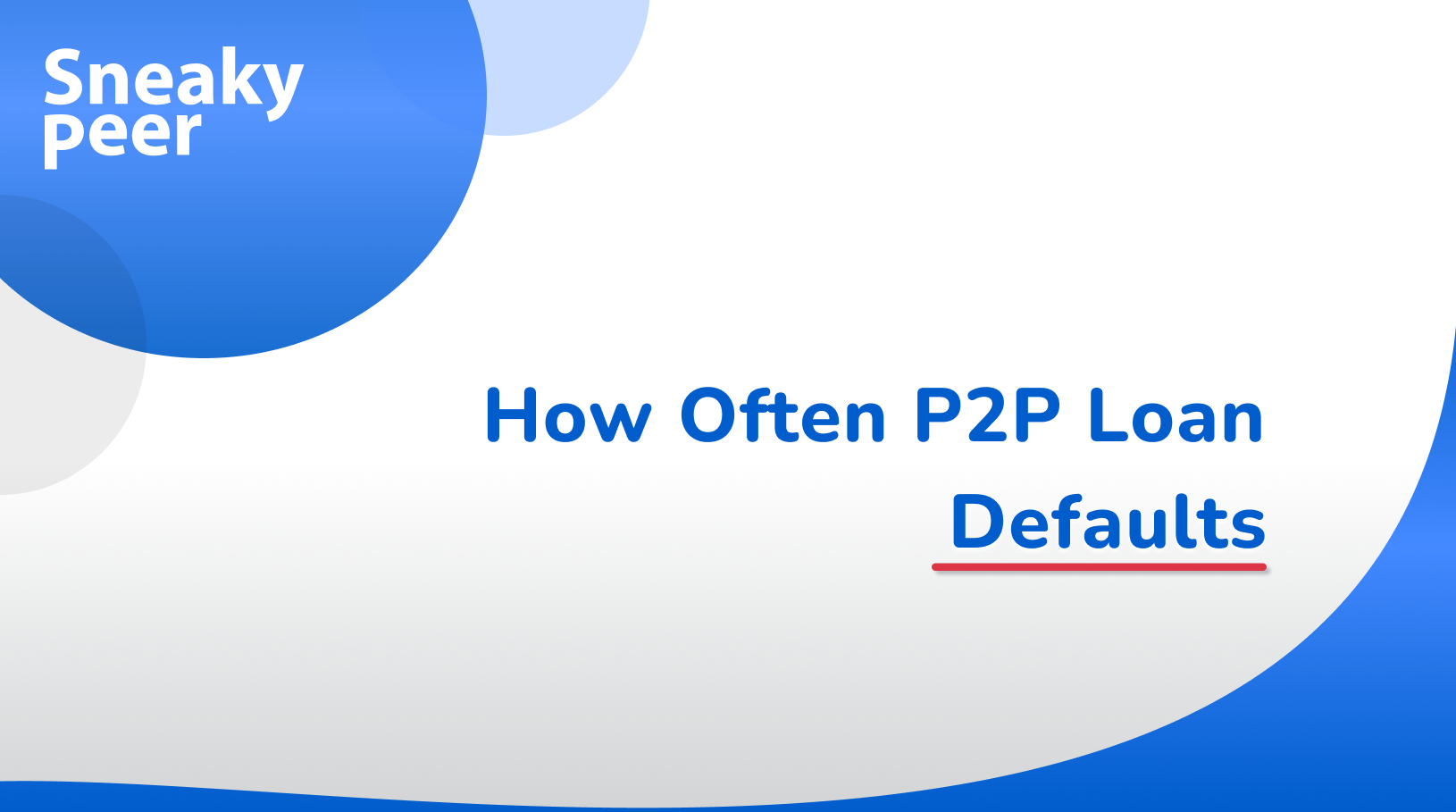
How Often P2P Loan Defaults
Table of Content
How Often Are P2P Loan Defaults?
How Peer to Peer Platforms Manage Loan Defaults?
Procedures for Collecting and Recovering
Introduction
Using peer-to-peer lending, individuals may borrow money from one another without having to go through a financial institution. The popularity of peer-to-peer lending has skyrocketed thanks to the proliferation of P2P lending websites.
Several Peer-to-Peer Lending platforms link borrowers directly with lenders. To facilitate the transaction, each website establishes its prices and conditions. A broad range of interests may be found on most sites, depending on the applicant's credit history.
The first step is for an investor to create an account on the website and deposit funds that will be used to fund loans. The risk category allocated to the applicant's financial profile influences the rate of interest the candidate will pay. The borrower has the option of reviewing and accepting several offers. The platform is in charge of the money transfers and the monthly payments. Alternatively, lenders and borrowers might opt to engage in a two-way negotiation.
Keep in mind that investing in p2p is not always a win-win situation because when there is lending there will be loan defaults. What is the p2p loan default? How often do p2p loan defaults? Keep reading and get your answer in this article.
What is P2P Loan Default?
In the event of loan default, the borrowers fail to pay a debt as agreed upon. Typically, this indicates that many payments have been missed over weeks or months in the case of most consumer loans. It's good news that lenders, as well as loan services, frequently give borrowers a grace period before actually punishing them with a late fee. Delinquency is the time interval between skipping a loan payment to having the loan fail. During the delinquent period, the borrower has time to contact the loan servicer to prevent default.
How Often Are P2P Loan Defaults?
People who are contemplating investing in a P2P lending service must be concerned about default rates, just like conventional banks. The default rate for loans issued by most European peer-to-peer lending platforms was 4.52 per cent.
Between April 2015 and December 2019, the default rate for all forms of loans to European debtors fluctuated between 0.8 percent and 1 percent on a composite index. According to Market Watch, the risk of default on credit card debt changes substantially more, reaching a peak of 9.1% in April 2015 and falling to 3.56 per cent by mid-2022.
How Peer to Peer Platforms Manage Loan Defaults?
When they learn that peer-to-peer (P2P) lending might yield them better returns in the double digits, many investors feel an immediate surge of excitement. In the very next second, though, they may ask: what about if a borrower defaults on a loan? How do firms that facilitate peer-to-peer lending deal with defaults?
To begin, considering that P2P is a crowd-funded platform, it needs to have a rigorous “know your customer” procedure as well as a robust credit evaluation algorithm to maintain its viability in the lending industry.
P2P organisations begin by analysing the borrower's financial footprints using a variety of data sources by their very own internal credit rating systems. By implementing a methodical approach to client creditworthiness assessment, platforms work hard to ensure loans are only provided to legitimate borrowers. In addition, the utilisation of alternative data contributes to the process of refining, which aids in determining a customer's intentions. It is worth to mention that most P2P platforms such as Mintoss offers buyback guarantees in order to mitigate risks related to borrowers
Procedures for Collecting and Recovering
Despite all these efforts, delinquencies still occurred. The platforms work hard to give borrowers as many opportunities as possible to repay the loan, even if the repayment is delayed. If there are instances of sites going into purposeful default, there is a streamlined repayments procedure in place that centres on four different tactics.
To begin, making use of the option to recover loans EMIs and unpaid dues through auto-debit might be helpful. One other component is ongoing follow-up through partner organisations, which may take the form of phone calls, e-mails, or in-person visits.
In most cases, the date of the monthly payments is somewhere between the first and the tenth of each month. All borrowers receive automatic reminders in the form of calls and text messages between three and five days even before EMI is due.
The collection team initiates engagement with the borrower who is in default and follows up on any payments that are still outstanding. Collection agencies that operate within the bounds of the law will continue to communicate with the borrower. In addition, the borrower's references are contacted to urge prompt repayment of the loan. If the borrower does not comply, a legal notice will be delivered on the lender's behalf.
To Conclude
So, is it safe to invest money in p2p lending? Your money is going to be at risk, just like it would be with any other investment. Other kinds of investing, on the other hand, tend to have a greater level of risk due to the unpredictability of repayments from lenders and other protections that P2P possesses. On the other hand, interest rates that are lower than inflation mean that low-risk savings accounts might cause you to lose money over time. Because of this, peer-to-peer lending is a practical strategy to expand your cash reserves.
It is essential to keep in mind that the amount of danger varies drastically based on the Peer to peer platform that you choose, so keep that in mind as well. Feel free to use Sneakypeer scoring to determine risks within the platform (Read more: risks within a P2P platform). If you do have any inquiries, please do not be reluctant to get in contact with us.